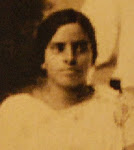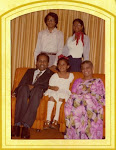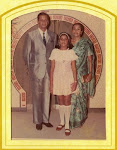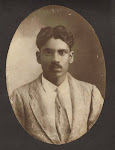Monday, February 28, 2011
Fiddler On The Roof!
Wednesday, February 9, 2011
Twinkle Little Star: HAPPY BIRTHDAY!

Monday, February 7, 2011
Eliza: Grand Daughter of Muthalithamby Saravanamuttu
Copyright©2011 VeerajaR ELIZA 'Ponnu' was a grand daughter of Saivaite nobles Muthalithamby Saravanamuttu and Vairavipillai of UDUVIL. In fact, for generations this noble family's charity "Maadam" (building) on Manipay road, right past Uduvil school, had been providing water and shelter to the pilgrims on their way to Manipay Maruthaddy Pillaiyar kovil/temple. During the annual festival throughout the month of April, the relatives took turns serving free lime juice, lime pickle water, butter milk, yogurt, young coconut water and even milk rice or sweet "Aval." As a child, I had enjoyed this charity event and remember all the excitement of pilgrims whenever a cauldron full of drinks or rice was brought in. This charity Madam of our Saivaite ancestors' still exists. Ironically, still serving the people--but, as a post-office. Next to this charity-maadam, towards Uduvil school is the dowry house of my great grandma Ponnu. This being the first, mostly concrete (local limestone formula) cement-built house (1800s), my great grandma was called "kal veetu Ponnu"--- meaning girl of the stone house. She was married to my great grandfather Dr. Robert Breckenridge who was an Alumni of Jaffna College, Vadukottai. Mind you, those days and even to this day "caste system" or class is number one criteria in considering a marriage proposal. This house was later given as dowry to Eliza Ponnu's second daughter Grace Muthumani, upon her marriage to Muthaliyar Arasasingam of Alvai. The older daughter Lily, my grand mother, married Dr. Solomon Saravanamuttu Rajanayagam and was given as dowry, the dutch built ancestral house with royal crest on top. Both son-in-laws of Eliza Ponnu were educated and held very respectable jobs. Not only that they were also from noble caste, very handsome and good looking. Worthy of the dowry?
Wednesday, February 2, 2011
Eliza: My Ancestor!
Upon Baptism, the Uduvil girls took up a Christian name and often their sponsor's name. Eliza, as the principal of the school was probably a favourite! My great grandmother Ponnamma married to Dr. Robert Breckenridge, was the first female in our family to convert and it's no wonder she took up the name Eliza. Older daughter of respected upper-class (so called Vellala, Chola descent) Saivaite landowner/philanthropist, she and her sister became Christians, while their brothers, Chelliah (oldest) and Thambiah (youngest) remained Saivaites. Chelliah/Chellachi couple and descendants were very fair skinned vegetarian Hindus and lived along the lane right across from Uduvil Girls school.
Upper class women were educated to marry upper class educated Christian gentlemen and raise a Christian elite family. Marriages were and are always fixed within the same caste/class---as a way of maintaining the gene pool, I was told. Even within a village the life styles and mannerism were so vastly different between the different castes, those days, it would have been naturally impossible to cross the line. Apparently, the Uduvil school and the American missionaries were sensitive to the local customs and did follow the caste rule in proposing marriages whenever they were involved. I will write in another post about mummy's thoughts on caste system: She's so ahead of her times and of course a great teacher. She always made us stop and think! *Most of these facts were directly passed on from my grandmother Lily Arulamma, her cousins Samuel Abraham and Thangamma, and my mother to me.Copyright©2011 VeerajaR
Reference: The white woman’s other burden: Western women and south Asia. Kumari Jayawardena 1995 – Biography & Autography (310 pgs) Eliza Agnew From Wikipedia, the free encyclopedia. Eliza Agnew (February 2, 1807 – June 14, 1883) was an American Presbyterian missionary. She was born in New York City to James and Jane Agnew. http://en.wikipedia.org/wiki/Eliza_Agnew
Upon Baptism, the Uduvil girls took up a Christian name and often their sponsor's name. Eliza, as the principal of the school was probably a favourite! My great grandmother Ponnamma married to Dr. Robert Breckenridge, was the first female in our family to convert and it's no wonder she took up the name Eliza. Older daughter of respected upper-class (so called Vellala, Chola descent) Saivaite landowner/philanthropist, she and her sister became Christians, while their brothers, Chelliah (oldest) and Thambiah (youngest) remained Saivaites. Chelliah/Chellachi couple and descendants were very fair skinned vegetarian Hindus and lived along the lane right across from Uduvil Girls school.
Upper class women were educated to marry upper class educated Christian gentlemen and raise a Christian elite family. Marriages were and are always fixed within the same caste/class---as a way of maintaining the gene pool, I was told. Even within a village the life styles and mannerism were so vastly different between the different castes, those days, it would have been naturally impossible to cross the line. Apparently, the Uduvil school and the American missionaries were sensitive to the local customs and did follow the caste rule in proposing marriages whenever they were involved. I will write in another post about mummy's thoughts on caste system: She's so ahead of her times and of course a great teacher. She always made us stop and think! *Most of these facts were directly passed on from my grandmother Lily Arulamma, her cousins Samuel Abraham and Thangamma, and my mother to me.Copyright©2011 VeerajaR
Eliza Agnew From Wikipedia, the free encyclopedia. Eliza Agnew (February 2, 1807 – June 14, 1883) was an American Presbyterian missionary. She was born in New York City to James and Jane Agnew. http://en.wikipedia.org/wiki/Eliza_Agnew
On December 28, 1823, at a revival meeting at the Orange Street Presbyterian Church,
she converted to Christianity. She was educated in and lived in New York City
for nearly 32 years, devoting her service to the home, to the "Sabbath-school", and
in the distribution of Scripture and tracts. After her parents died, she secured appointment
to the Ceylon Mission of the American Board of Boston in 1839. She sailed from
Boston, Massachusetts to Jaffna,Ceylon (Sri Lanka as of 1972), aboard the Black Warrior.
She served as teacher for 42 years without furlough in the Female Boarding School
in Uduvil, just north of Jaffna, Ceylon. The Missionary Herald (September, 1863)
rewarded her pioneering efforts in Ceylon towards helping girls and women with the
following quote: "It is largely owing to the work she was permitted to do
that female education is more advanced here (Ceylon) than in
almost any other heathen land."
She was a woman of prayer, concerned with the spiritual welfare
of her students. Of one thousand people of three generations
under her influence, six hundred adopted to Christianity. She
visited and assisted graduates and ex-pupils with home
economics and spiritual affairs. Then she resigned as principle
of the school in 1879 and moved to Manepay, just west
of the school. She resided in the home of Misses
M. and M.W. Leitch, American Board missionaries in Manipai.
She died from a paralytic stroke in June 1883 and
was buried in Oodooville near the school over which she presided.
- Johnson, Allen, ed. Dictionary of American Biography. New York:Charles Scribner's Sons, 1936.
- Who Was Who in American Biography: Historical Volume, 1607–1896. Chicago: Marquis Who's Who, 1963.
+copy.jpg)
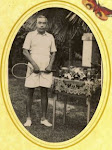

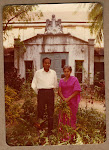-Uduvil-GrandmaHouse.jpg)



